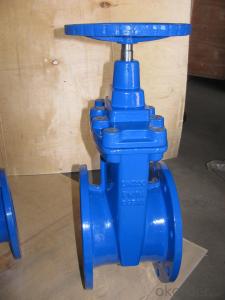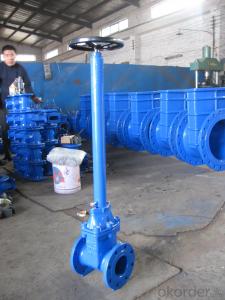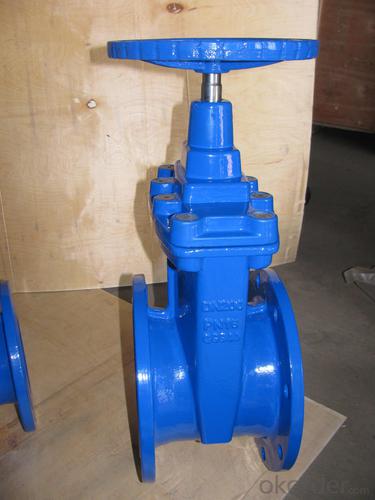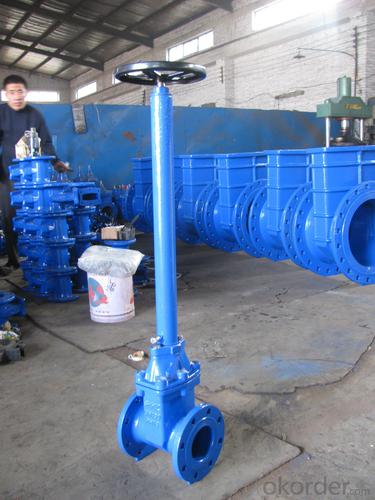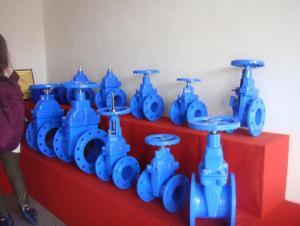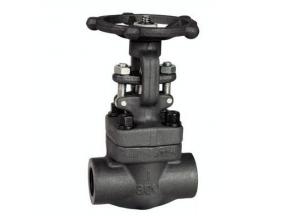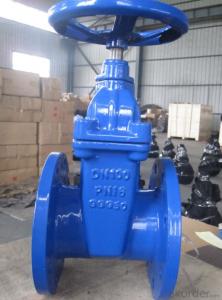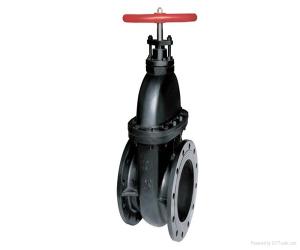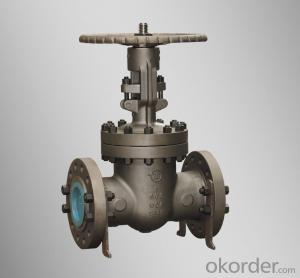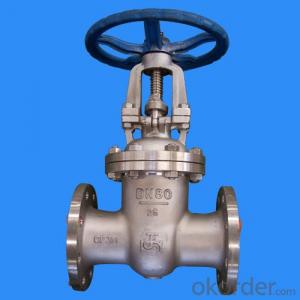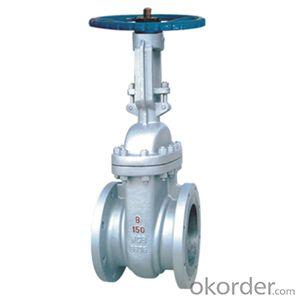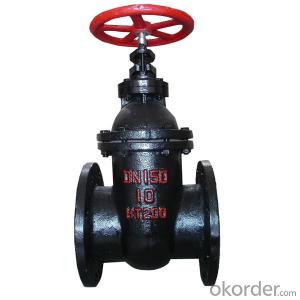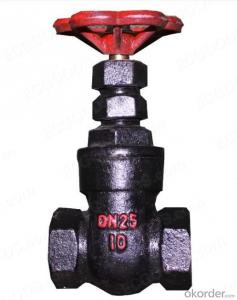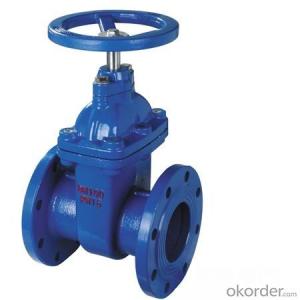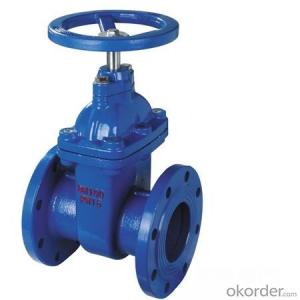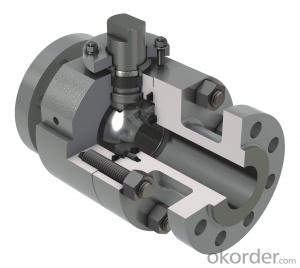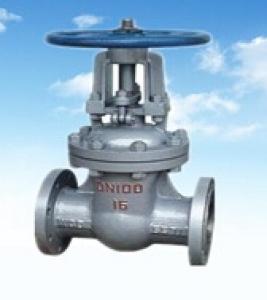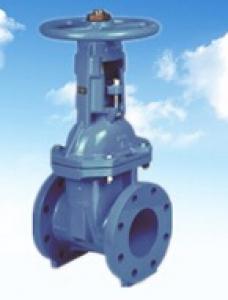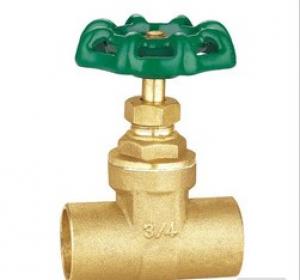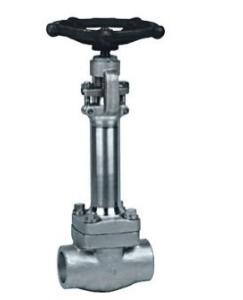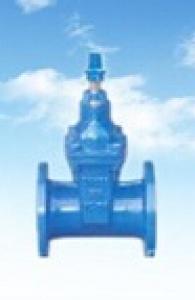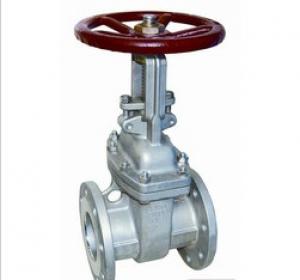UL/FM Approved Flanged Resilient NRS Gate Valve
- Loading Port:
- Tianjin
- Payment Terms:
- TT OR LC
- Min Order Qty:
- 100 pc
- Supply Capability:
- 10000 pc/month
OKorder Service Pledge
OKorder Financial Service
You Might Also Like
1.Structure of Gate Valve Description:
A gate valve, also known as a sluice valve, is a valve that opens by lifting a round or rectangular gate/wedge out of the path of the fluid. The distinct feature of a gate valve is the sealing surfaces between the gate and seats are planar, so gate valves are often used when a straight-line flow of fluid and minimum restriction is desired. The gate faces can form a wedge shape or they can be parallel. Gate valves are primarily used to permit or prevent the flow of liquids, but typical gate valves shouldn't be used for regulating flow, unless they are specifically designed for that purpose. Because of their ability to cut through liquids, gate valves are often used in the petroleum industry. For extremely thick fluids, a specialty valve often known as a knife valve is used to cut through the liquid. On opening the gate valve, the flow path is enlarged in a highly nonlinear manner with respect to percent of opening. This means that flow rate does not change evenly with stem travel. Also, a partially open gate disk tends to vibrate from the fluid flow. Most of the flow change occurs near shutoff with a relatively high fluid velocity causing disk and seat wear and eventual leakage if used to regulate flow. Typical gate valves are designed to be fully opened or closed.When fully open, the typical gate valve has no obstruction in the flow path, resulting in very low friction loss.
2. Main Features of the Gate Valve:
• Valve body cavity using non-toxic epoxy resin,both inside and outside flashboard completely is coated with rubber
• Free of water pollution
• High manufacturing accuracy
• High strength
• Environmental protection and energy saving
• Good visual effect
3. Images
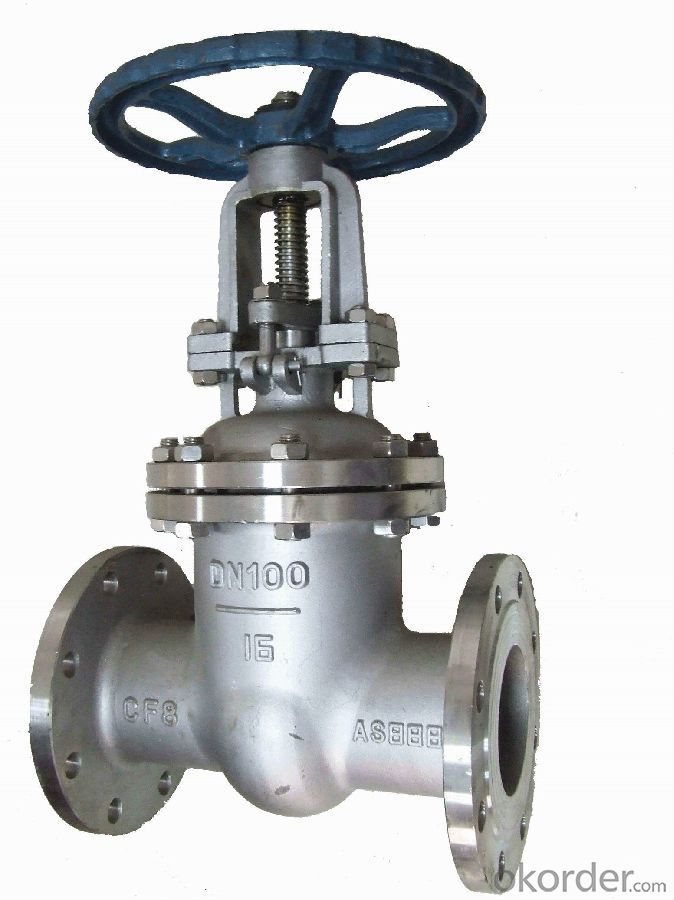
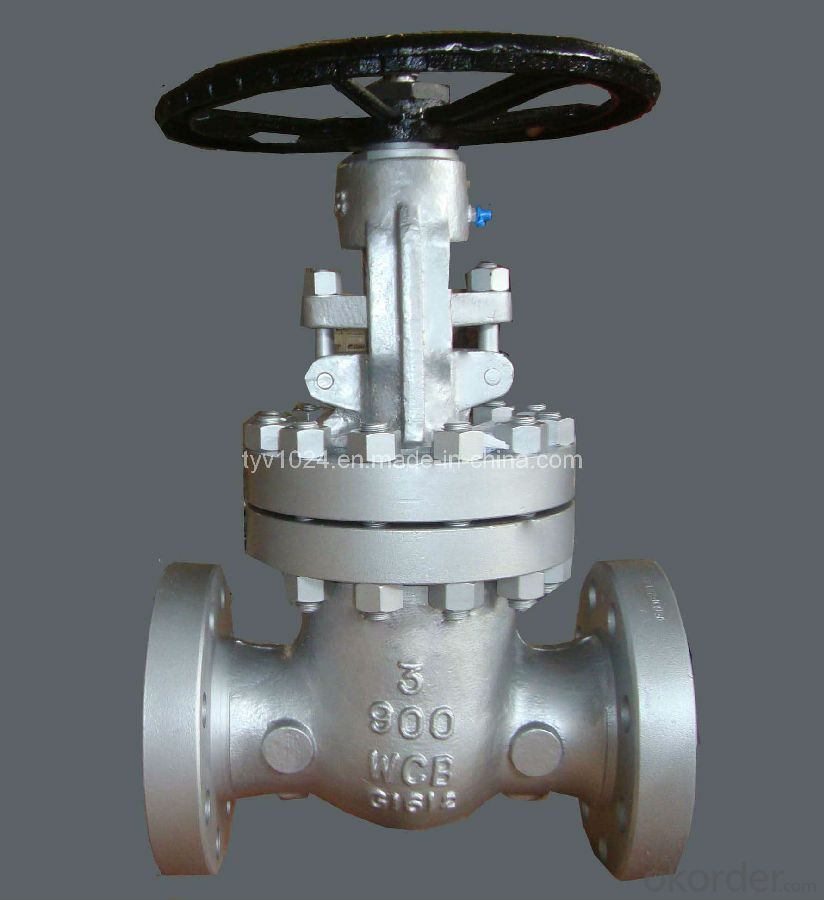
4. Gate valve Specification
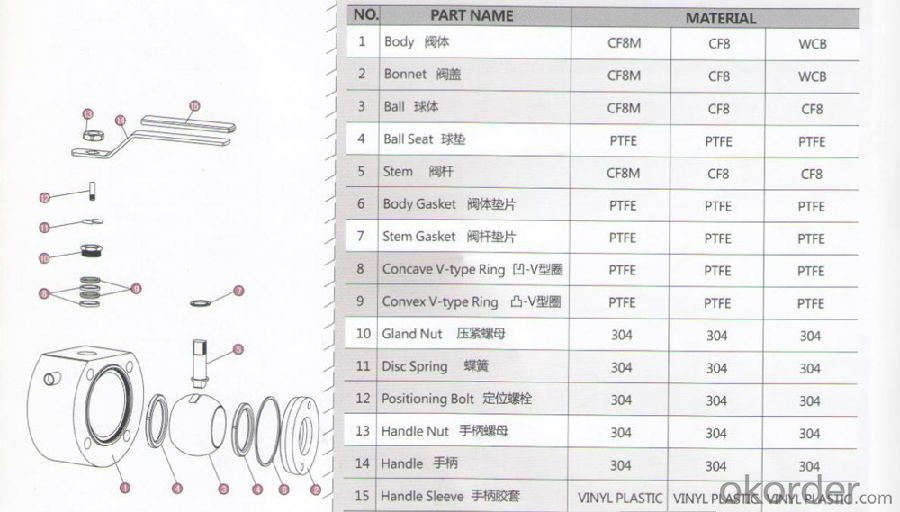
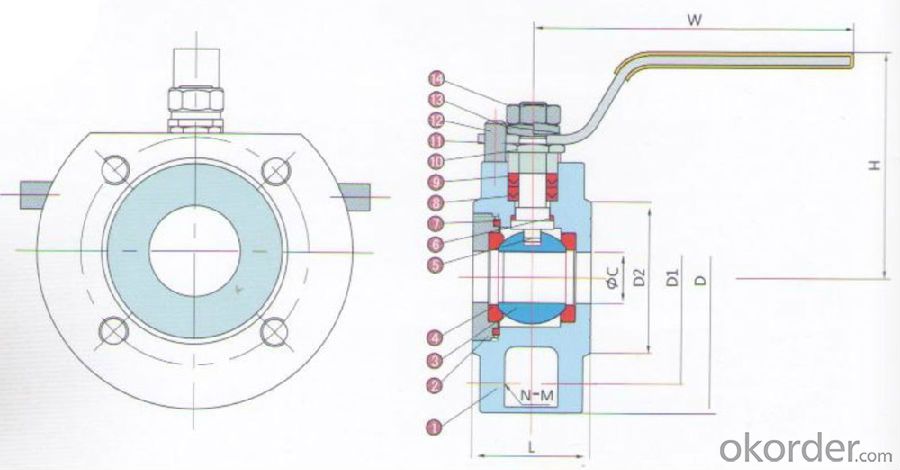
5.FAQ
1. What's are the characteristics of gate valve?
The distinct feature of a gate valve is the sealing surfaces between the gate and seats are planar, so gate valves are often used when a straight-line flow of fluid and minimum restriction is desired. The gate faces can form a wedge shape or they can be parallel.
2. What is the work principle of gate valve ?
The gate faces can form a wedge shape or they can be parallel. Gate valves are primarily used to permit or prevent the flow of liquids, but typical gate valves shouldn't be used for regulating flow, unless they are specifically designed for that purpose. Because of their ability to cut through liquids, gate valves are often used in the petroleum industry.
3. What is the structure?
Bonnets provide leakproof closure for the valve body. Gate valves may have a screw-in, union, or bolted bonnet. Screw-in bonnet is the simplest, offering a durable, pressure-tight seal. Union bonnet is suitable for applications requiring frequent inspection and cleaning. It also gives the body added strength. Bolted bonnet is used for larger valves and higher pressure applications.
- Q: What is the difference between the copper gate valve and the ordinary material gate valve?!
- The material of general gate valve is cast iron, and the copper gate valve should be used in special requirement.
- Q: What are the meaning of the cast rigid gate valves z41h-16c?
- According to the provisions of the JB/T 308-2004 valve type programming method:Z== gate valve4== flange connection1== rigid single gateH== sealing surface material: Cr13 stainless steel16== pressure rating: 1.6MPaC== body material: carbon steel
- Q: What are the main types of gate valves?
- According to the thread position of the valve stem, can be divided into two kinds of open rod gate valve and dark rod gate valve.
- Q: What's the difference between open rod gate and dark rod gate valve?
- There are several differences between the open bar gate valve and the dark rod gate valve:1, the bright bar gate valve can see the screw rod, but the dark rod can not see the lead screw;2, clear shot valve is threaded through the drive rod and the steering wheel to raise or lower the valve; dark rod valve in the switch when the steering wheel is connected with the valve stem is relatively fixed, it is through the stem of a fixed point in the rotation to drive the valve to move up and down to complete the opening and closing of the;Drive screw
- Q: Stainless steel gate valve DN150 200300 weight, who knows?
- Valve selection of different driving methods, connection forms, structural forms, nominal pressure, sealing surface materials, lining materials, valve body material will affect the weight of the gate valve more or less, it can not be generalized.Take my commonly used Z41H-16P (i.e. PN1.6MPa) series stainless steel gate valve as an example, and the weight of DN150/200/300 is 134/192/379kg. Of course, different manufacturers may vary in weight, but not much.I hope I can help you.
- Q: What does the gate valve 150# mean? Is it stress PN? What's that, PN16 or?It's better to have some specific links, thanks!
- 150Lb (American Standard pressure value corresponding to the PN2.0)
- Q: Will the water supply and drainage to wear civil air defense gate valve, the use of bright rod or dark rod?
- Water supply and drainage and civil air defense works, now with the dark rod type elastic sealing gate valve more.Compared to the gate and the traditional carve type or parallel double gate plate valve has the following characteristics: 1, soft sealing valve body, valve cover using precision casting foundry, a molding, no mechanical processing, do not use sealed copper ring, saving non-ferrous metals;
- Q: Yes, soft sealing gate valve can reach 25 kilograms, Fujian light valve company has this type of soft sealing gate valveAnonymous browsing | 28 times
- Soft seal butterfly valve seal is good, but can only withstand up to 16 pressure, or the plastic can not stand. A short period of time is OK, and it's also related to the workmanship and quality of the factory. The quality is poor.
- Q: What does valve qz45x - 10q mean?
- Crown valve pressWhat does Q stand for? I'm not sure. It's probably made of ductile iron"Z" means "gate valve"4 represents flange connection5 represents the dark bar (1 represents the Ming pole)X stands for rubber seal and soft seal10q stands for 10 pressure
- Q: Gate valve is gate valve, gate valve specifications, model code is generally what?
- Valve lock plate valve, gate valve and code.According to domestic valve model standards, the valve model is by the valve type, gate valve drive mode, gate valve connection, gate valve structure, sealing material, valve body material code to indicate.1, gate valve type code named Z;2, gate valve drive mode code by letters, common 2- electric hydraulic, 9- electric, 6- pneumatic, 5- bevel gear drive, 3- turbo worm; manual do not need to write out;3, gate valve connection form code with letters to indicate, 1- internal thread, 2- external thread, 4- flange type, 6- welding, 7- pairs clamp type, 9- clamp, 0- card sleeve;4, the valve structure of code, 0- flexible wedge, 1- rod single wedge gate valve, 2- rising stem wedge gate valve, 3- parallel single gate valve, 4- parallel double gate valve, 5- dark pole single wedge gate valve, 6- dark bar wedge gate valve 7-, dark bar parallel gate valve, parallel gate valve 9- dark bar;5, sealing materials or lining materials were used R- T- austenitic stainless steel, copper alloy, X- rubber, S- plastic, N- nylon, F- fluorine plastic, H-Cr series stainless steel, hard alloy Y-, J- rubber, M- Monel alloy, Tc- ceramics;6, the body material code Z- K- gray cast iron, malleable cast iron, Q- ductile iron, copper and T- alloy, C- steel, P- chromium nickel stainless steel, R- stainless steel chromium nickel molybdenum, chromium molybdenum vanadium steel V-.For example: electric, flanged, rod wedge gate valve, sealing surface material by direct processing, nominal pressure PN0.1MPa of the valve body is made of grey cast iron gate valve: Z942W-1 electric wedge gate valve.
Send your message to us
UL/FM Approved Flanged Resilient NRS Gate Valve
- Loading Port:
- Tianjin
- Payment Terms:
- TT OR LC
- Min Order Qty:
- 100 pc
- Supply Capability:
- 10000 pc/month
OKorder Service Pledge
OKorder Financial Service
Similar products
Hot products
Hot Searches
